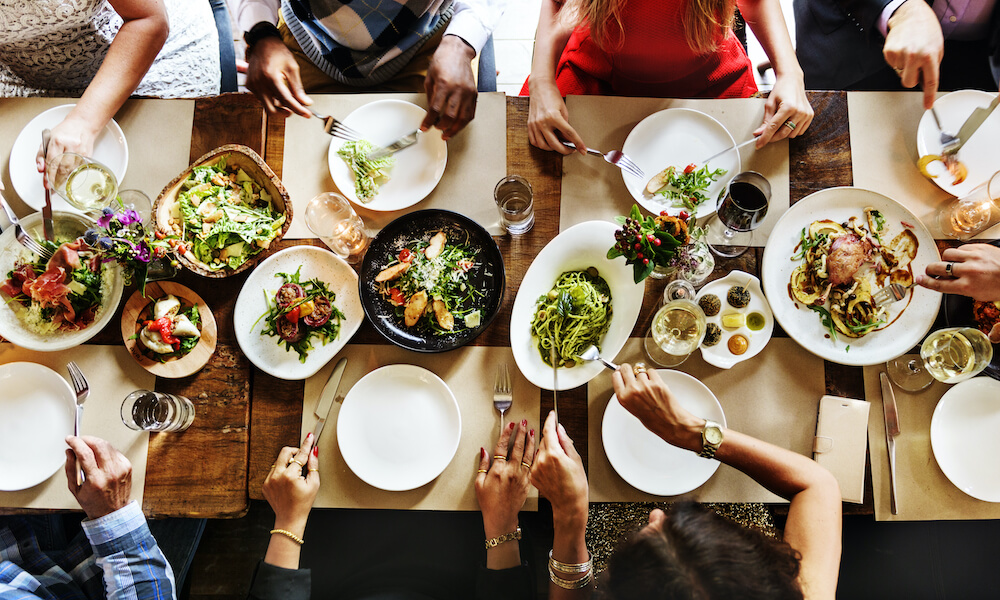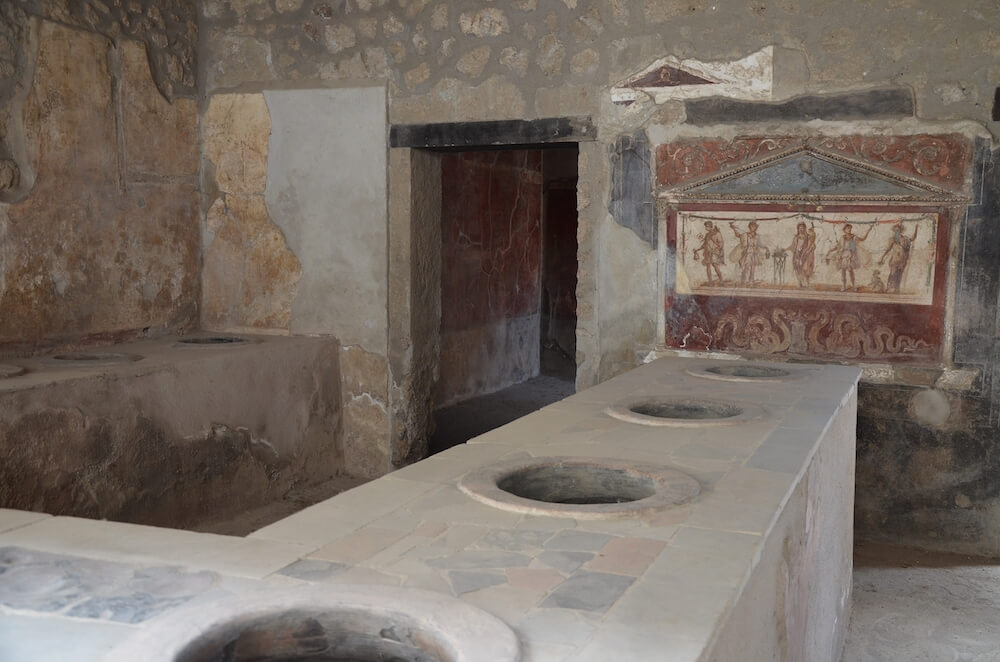Pompeii to New York: a brief history of restaurants and street food
It’s hard to imagine modern life without eating out. Every town is full of places to have a social gathering, a date, or simply a tasty meal. How did it all start?

The rowdy bars of the Roman Empire
The ancient Mediterranean world is famous for its culinary excess and vibrant food culture: Greek symposiums and lavish Roman banquets, the Asian spice trade, and detailed cookbooks. So, it is no wonder that historians consider ancient Rome to be the birthplace of public bars and restaurants.
As it turns out, Pompei was once a famous culinary destination of the ancient world. Ancient historian Dame Mary Beard called the city “a cross between Las Vegas and Brighton”—a place where Romans came to party, gamble, eat exotic dishes and drink the best wines available.
In the years leading up to its tragic destruction in 79 CE, the city had over two hundred hotels, inns, restaurants, and brothels, which attracted a steady clientele of merchants, travelers, and middle-class city-dwellers. There were also cheap establishments called hospitiums, which provided shelter and food to the lower classes.

Because Pompeii was so well-preserved under the ash and rubble of mount Vesuvius, historians have an excellent idea of how city life once looked. For example, we know that the Inn of Prius was one of the most popular drinking establishments.
Several pastry shops once had round ovens, which were similar to those used for baking pizzas today.
The wine was usually diluted with water, as was customary in the Empire. Still, some tavern keepers were notorious for watering down their drinks a bit too much—graffiti scrawled on one of the city walls chastises an innkeeper for trying to fool his customers.
While most had lewd pictures and funny graffiti on them, some of the bars’ walls were adorned with old political advertisements. Because of that, historians believe that bars were often a place for heated discussions.
This was one of the reasons why Roman politicians eyed bars and taverns with suspicion, thinking them to be harbors of civil unrest. Emperor Tiberius even tried to outlaw dining establishments, forbidding bakers to serve their wares in-house. Emperor Claudius also attempted to wage war against restaurants. He forbade public places to sell “boiled meat and hot water,” as did emperor Nero after him—although Nero was known for frequenting bars and taverns.
However, according to food historian William Sitwell, these culinary restrictions either didn’t reach Pompeii or were ignored by the local authorities. The city’s dining culture thrived.

But taverns and inns weren’t the only places a hungry Roman could eat their fill of pastries and baked meat—street vendors also sold various dishes which people could eat on the go: small loaves of bread, fried fish, or beef wrapped in fig leaves. In fact, in 2019, archeologists studying Pompeii uncovered what can be best described as an ancient fast-food spot, where ancient merchants and workers would order cheap soup in ceramic bowls.
What’s later: What do French restaurants and medieval Chinese noodle shops have in common? What street food did sultans eat? How did the French Revolution fuel the emergence of modern restaurant culture?
Dining out in Song Dynasty China
The Song Dynasty (960–1279 AD) was one of the Chinese imperial states that enjoyed the height of the political and economic power of its time. Its population was growing dramatically, it was the most urbanized state in the world, and the technological innovation allowed it to support thriving agriculture.
Kaifeng, the Empire’s capital, had around one million people and was one of the world’s most important trading centers. Local farmers were encouraged to grow exotic new crops such as sugar, oranges, and cotton, while merchants built massive ships to transport these goods across the country and abroad. At this time, classic Chinese cuisine emerged and started branching out into distinct regional varieties—and food became part of the national identity.
